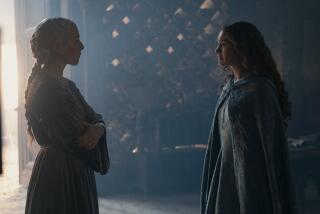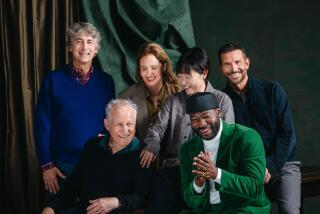âAntebellumâ ending explained: Janelle Monáe on the filmâs emotionally charged conclusion
Spoiler warning: The following story discusses the ending of the thriller âAntebellum.â If you havenât seen the film and prefer to read less spoiler-y content, check out our review and interview with the filmmakers.
Lionsgateâs âAntebellum,â a psychological horror film about a Black woman forced into modern day chattel slavery, ends with its heroine, Veronica Eden (played by Janelle Monáe), riding triumphantly out of the Civil War reenactment park where sheâd been held against her will.
The ending, which concluded with Monáe on horseback charging across a battlefield as police rushed in (presumably to her aid), âwas why I said yes to the film,â the actress said.
âLike everybody, Iâve watched movies [about] slavery, but this wasnât a slave movie,â she said. âIt is more nuanced and layered and does a few things that make it more of a psychological thriller. And after reading the ending, I was like, âYes, this is not a white savior film.â There was triumph on the page, and thatâs what I wanted to see. If Iâm showing up to see a film that touches on slavery, I want it to have an ending that would leave me standing up and feeling victorious, not defeated.â
âIt was paramount that Veronica be victorious,â said Christopher Renz, who directed the film with longtime partner Gerard Bush. âBut we did not want to tie everything up into a neat little bow after that because thatâs not honest.â
âThatâs kind of trademark for us to stop and give you something to think about,â said Bush. âAnd to have the imagination of the audience enter into the equation. We donât have a lot of interest in stories with big bows tied around the box at the end. What weâre trying to say as we begin the movie at sunset and bookend it at the dawn of a new day is that you should be left thinking. Weâre not here to provide you with all of the answers.â
Prior to riding into freedom, Veronica has a final face-off with her captorâs wife, Elizabeth, played by Jena Malone. âMy fight scene with Jena was choreographed, but that was real rage,â said Monáe. âThere was a lot of rolling around and moments when we would get scarred, scratched and bruised up in real life because there was so much pent-up energy. All I kept thinking about was all of the white women who went to vote for Trump. And all of the white women who sat there on the plantation as their husbands beat our ancestors. And about Emmett Till and the white woman who lied on him. I had to channel that during our fight. I had to really, without hurting Jena, fight her.â
The scene required Monáe to hop back into the saddle for the first time since suffering a horseback riding accident in 2010. âIn one of my short films, âMany Moons,â I wanted to rear a horse,âshe said. âAnd during our rehearsals, one of the horses took off with me. It was at night and it was dark and I panicked and jumped off and bruised my tailbone. So I had to get over some fears doing this movie, and I knew that I would have to learn how to ride a horse again. I knew it was going to take me getting over that fear.â
More to Read
Only good movies
Get the Indie Focus newsletter, Mark Olsen's weekly guide to the world of cinema.
You may occasionally receive promotional content from the Los Angeles Times.











